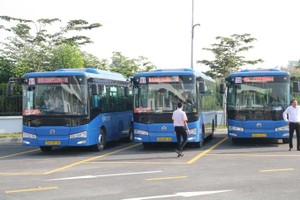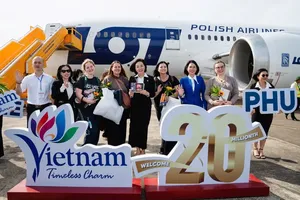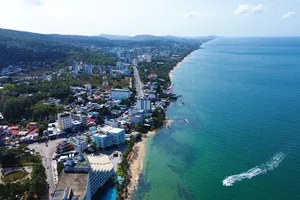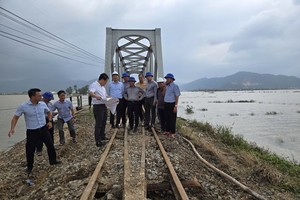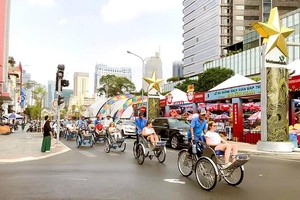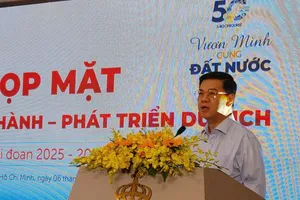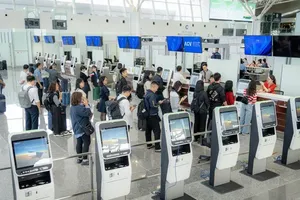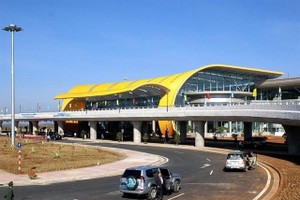At the conference titled “Linking Medical Tourism Development between Ho Chi Minh City and Provinces in the Mekong Delta and Southeast Region,” organized by the Ho Chi Minh City Department of Tourism on October 31, experts described this market as a “goldmine” that the city must leverage effectively.
Billion-dollar market

Ho Chi Minh City is home to over 160 hospitals and more than 9,000 specialized clinics, supported by a highly skilled workforce of doctors and medical professionals. Modern infrastructure, professional accommodation, and therapeutic and wellness services, combined with reasonable costs, enable the city to increasingly attract both domestic and international visitors, particularly those seeking medical treatment and rehabilitation.
According to the Ministry of Health, the global medical tourism market reached US$100 billion in 2024, with an annual growth rate of 15–25 percent. In Vietnam, the market was valued at around US$700 million in 2024 and is projected to reach US$4 billion by 2033, growing at an average rate of 18 percent per year. In Ho Chi Minh City, approximately 30–40 percent of out-of-town and international visitors come for medical treatment, primarily from Cambodia, Laos, and overseas Vietnamese communities, while visitors from the United States, Australia, Canada, and Japan are steadily increasing.
Since the beginning of the year, Ho Chi Minh City’s healthcare sector has consistently achieved medical milestones of international significance, such as a rare fetal heart intervention jointly performed by Tu Du Hospital and Children’s Hospital 1 and the successful treatment and intervention for a Russian patient who suffered a sudden stroke at the People's Hospital 115. These breakthroughs have reinforced confidence in the city’s expertise in advanced medical care.
A leader of a travel company in Ho Chi Minh City revealed that many tourists are willing to spend hundreds of millions of Vietnamese dong on medical tourism services in Vietnam, including dental care and neck-shoulder therapy. Vietnam’s major advantage lies in treatment costs, which are only 30 percent-50 percent of those in Singapore or Thailand, while quality is close to international standards.
Ho Chi Minh City is fully equipped to become a leading medical and wellness tourism hub in the region. Through public-private partnerships and interregional cooperation, the city aims to develop a comprehensive healthcare ecosystem, promoting the image of HCMC as a destination for health, experience, and happiness both domestically and internationally,” said Deputy Director of the Ho Chi Minh City Department of Tourism, Bui Thi Ngoc Hieu.
Ho Chi Minh City—hub of the regional medical tourism chain
At the conference, experts and enterprises agreed that Ho Chi Minh City must become the core of the Southern region’s medical tourism network.
Le Truong Hoang Nam, Deputy Head of the Product Development Department at Vietravel Corp, proposed a “three-tier linkage” model. Tier 1 consists of high-tech treatment centers located in Ho Chi Minh City. Tier 2 comprises wellness and recovery resorts across the Southeast and Mekong Delta regions. Tier 3 covers a logistics and smart tourism corridor supporting the entire region.
He also suggested issuing regional medical tourism standards, implementing medical tourism visas for international visitors combining treatment and insured wellness stays, and establishing a Medical Tourism Coordination Board, with the Ho Chi Minh City Department of Tourism acting as the central authority.
He also emphasized the need to strengthen public-private partnerships, develop medical infrastructure and technology, and establish a Medical Tourism Development Fund to mobilize private resources.
Regarding human resources, he suggested linking training programs among medical schools, tourism institutes, and businesses while forming a medical tourism enterprise network comprising hospitals, resorts, airlines, insurance providers, and travel agencies. This network would enable the development of “all-in-one” service packages, enhancing the overall visitor experience.
Dr. Truong Thi Ngoc Lan, Deputy Director of the Institute of Traditional Medicine, suggested that Vietnam could learn from integrated models in China and Thailand, where wellness resorts combine traditional medicine, massage, and standardized natural pharmaceuticals.
From an operational perspective, Ms. Nguyen Thi Mai, Head of the Health Care Community at Vung Tau Tourism Nursing Company, emphasized that sustainable medical tourism in Vietnam requires a clear legal framework. She highlighted the need for end-to-end consultation services before, during, and after the journey; mandatory medical interpreters; dedicated ambulances for tourists; and direct hospital coordination. Every step, including risk management and emergency care for elderly visitors, must be standardized.
Mr. Rafi Kot, founder and CEO of the Family Medical Practice, emphasized that Vietnam should initiate an international accreditation program for medical schools. This would provide young doctors opportunities for specialized training and approach global standards. He also suggested developing centers of medical excellence to replace the traditional general hospital model and establishing an intersectoral task force with representatives from the tourism and healthcare sectors to shape a sustainable, internationally competitive medical tourism strategy.
